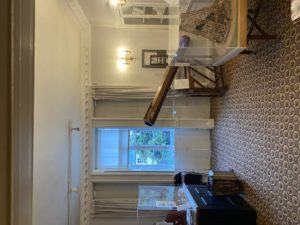Go into any bookshop in the UK and look in the German history section – the vast majority of books are related to World War Two – there is almost nothing on German post war reconstruction, or the origins of the state. Britain’s inability to see beyond the war has prevented us from learning from German success, and their achievements are, of course, very many. From the arts, the sciences, manufacturing, Germany is a world power: Adidas, Aldi, Audi, Bach, Beethoven, BMW, Bosch, Dr Martens, Einstein, Lidl, Mercedes, Porsche, the printing press, Puma, Wagner. Alexander Von Humboldt has more animals and places named after him than anyone else. Heard of him? Why not?
William Hershel discovered the planet Uranus from his back garden in Bath. I spend much of my time in that city and am struck by how few of the residents have heard of him or know there is a museum there dedicated to the man, his equally famous sister and their discoveries. Hershel, like Humboldt may be less than well known because they were German. And the British, particularly the English, have a bit of thing about Germans. (When England play Germany at football commentators always refer to the two countries having a rivalry, but I’m pretty sure it’s one way – the Germans don’t think about the English anything like as much.)
John Kampfner’s Why the Germans Do It Better is a great book with a terrible title. Kampfner is in awe of the Germans, but not so much that the book avoids being critical.
If the Germans are more successful than the rest of Europe and particularly the UK it maybe because their economy is distributed, geographically and productively. 80% of Germany’s GDP comes from family businesses. And two thirds of these businesses are in places with fewer than 50,000 inhabitants. Compare this to the UK, where we are a predominantly service based economy. One astonishing fact exemplifies the difference between Germany and other major economies: Berlin is the only capital city where GDP per capita is lower than the rest of the country.
Germany was unified in 1871, before then it was made up of the states of the Holy Roman Empire, each with its own prince, or elector, its own identity. This maybe one origin of Germany’s more distributed economy. German unification came too late for any major colonial influence, the country did not grow rich on the proceeds of the slave trade. The Germans had to create their own wealth. Germany introduced compulsory education sixty years earlier than the UK and by the early 1800s had fifty universities compared to just Oxford and Cambridge in England. (Scotland was also ahead of England in this respect). The printing press was invented by Gutenberg in Mainz – in 1785 Germany circulated 1,225 periodicals and by 1913 more books were published annually in Germany (31,051 titles) than any other country in the world. In 1900 illiteracy was lower in Germany than France or the UK – all these factors led to the creation of an educated middle class, and in turn helped give rise to the family businesses that fuel the German economy. German law requires significant employee representation on the supervisory boards of large companies. Germany has many faults: its obsession with cars and coal, successive coalition governments that are often slow to act, huge, disastrous, infrastructure projects (the Tempelhof Airport) and a less than world class banking system. But if the UK (and particularly England) can learn from Germany then we must all put the past behind us and maybe think of the country as a friend rather than as a rival.
